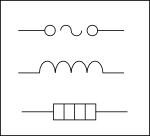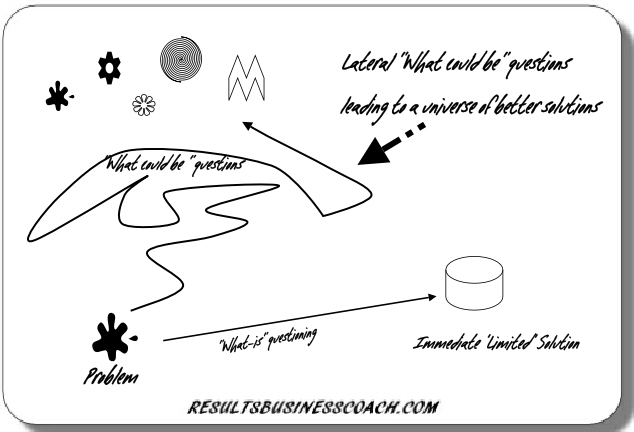 Lack of clarity encourages assumptions.
Lack of clarity encourages assumptions.
We assume what our client wants. We do the work. Our client is disappointed with the output. Assumptions lead to disagreement. Disagreements with clients mean loss of time, revenue and the possibility of losing a valuable client.
We are in front of a potential client selling our services. After spending some time with the potential client, we assume that we know what he wants. But he has NOT said ‘yes’ to our proposal. He does not feel we can deliver what we want.
The problem with communicating“What is”
“What is” communication, simply transmits information from one party to another in a static or passive way. A left-brain exercise. This assumes things will work out in a linear fashion.
With “What is” communication, we tend to fill in the blanks using our experience and expertise. Unfortunately, the other party looks at these blanks differently.
Here is an example:
A potential client approaches a Graphic Designer wanting a new logo. The designer creates one of the best logo’s he possibly can. The client is delighted to start with. But in a few months, the client feels disappointed. Although the graphic designer obliged with ‘What is’ and filled in the blanks, what the client actually wanted was ‘more sales’. In the client’s mind, he equated ‘new logo’ to more sales.
Lack of clarity from both sides created a situation of dissatisfaction.
If this sounds familiar here is a tool that can help you.
Ask ‘Lateral Questions’.
Lateral Questions focuses on ‘what really could be’ and facilitates more information to create a dynamic engagement with your prospect or client.
How can ‘lateral questions’ help?
- The main purpose of Lateral questions is to create movement or action in a stagnant communication process that facilitates on going opportunities beyond initial action.
- Lateral questions help move to an ‘unknown’ space to explore better opportunities.
- Lateral questions can help break old patterns and established assumptions.
- Lateral questions can encourage participants to look at the ‘big picture’ in the negotiation.
- Lateral questions can open up opportunities for new learning.
Here is an example of the use of Lateral questions
- When we achieved significant success in the past, what actions and conditions led to success? How could we create those conditions to tackle the next success level?
- What are your strengths that you contribute to the success in the past?
- How many ways can we communicate our passion and expertise and the difference we can make without increasing our cost base?
Here is a brief example of a ‘lateral question’ to turn a situation that dis-empowers any service provider in to a position of command
A potential client walks up to you and says something like this: “We are launching a new product. Can you design an information leaflet for it? How much will it cost and when can you have it delivered?”
As you can see, the prospect is transferring pure information and waiting for you to respond in line with his request. You can simply respond by answering his questions by giving him price and delivery details. This will most likely take the route of cheapest price and the quickest delivery.
Alternatively, you can explore this opportunity with ‘lateral questions’. First of all, thank him for the inquiry. Then followed by something along the lines of “this is exciting.. tell me more about the launch!” At this point price and delivery are put on hold and your prospect will start talking about the new product and its launch. Dig deeper with more questions about the product and the launch. When the conversation drifts back to the launch ask the prospect, “Why do you think the information leaflet is the best way to launch this product?” This powerful lateral question will flip the power from your prospect to a level playing field to explore opportunities beyond initial actions.
Questions to avoid
Lateral questions dig deeper and go beyond ‘what is’ to ‘what could be’. Certain questions will stop you digging deeper. A ‘why’ question limits the scope of going much further. In the above example if we ask our prospect ‘why’ he needs leaflets to launch his new product, both parties are limiting them selves by not focusing beyond the leaflets. Questions that illicit ‘yes/no’ response are also very limiting.
Skill of listening
When you ask a lateral question, be fully present and ‘listen’ to the response. Fully present means that you are not making any judgments or evaluations while your prospect or client is responding.
It is over to you
What would it take for you to practice ‘lateral questioning’ in your everyday conversations with your prospects and clients?
+ Ravi Peal-Shankar



{ 0 comments… add one now }